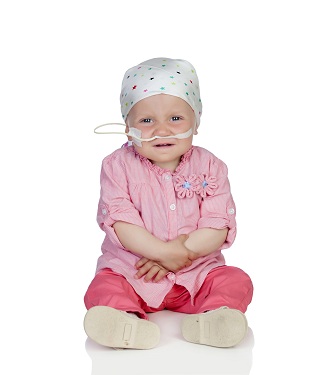Why cancer drugs affect young children differently

Related topics
Health Innovation Health, Demographic Change and Wellbeing France Germany Italy Spain United Kingdomdate: 30/04/2014
Project: European paediatric oncology off-patent ...
acronym: EPOC
See also: CORDIS
Contact: Contact
The findings of the EPOC project indicate that clearance rates for doxorubicin, corrected for body size, are similar in older children and in adults, but that children under three eliminate the drug more slowly.
This observation, which suggests that the drug concentrations achieved in very young children may be higher than in those in older patients, has implications for cancer treatment and could help to develop strategies to reduce the risk of serious side effects.
A delicate balance
In addition to side effects during the treatment, there can also be long-term implications: some drugs can cause problems that persist or occur after the therapy has ended. Above a defined cumulative dose, doxorubicin, for example, can permanently weaken the heart. This risk must be taken into account in order to secure the best chances of patients being cured of their cancer and going on to lead long, healthy lives.
“There are two considerations here,” says project coordinator Professor Alan Boddy of Newcastle University. “One is that you wouldn’t want to not give the drug, and that you would want to give the appropriate dose of the drug to maximise the chance of it working. Another is that a lot of the patients treated with this drug have a prospect of very long-term survival, and you want to avoid chronic side effects that may result from the treatment.”
Better knowledge, better treatment
Dosages for children are often derived from those used for adults, adjusted for body size, and may also be specific to the type of tumour. While the success rates of these treatments are very high, this approach does not necessarily account for the fact that children aren’t simply small adults. New insights could, therefore, help to make the treatment of childhood cancers more effective and safe.
The need for research in this area had been highlighted by the European Medicines Agency (EMA) in its Priority List for Studies into Paediatric Medicinal Products. EPOC set out to provide the required information for doxorubicin.
To do so, the researchers collected data from 100 chemotherapy patients aged from 0 to 17. As childhood cancers are, luckily, quite rare, finding enough patients for the study led to the participation of a number of clinical centres in different EU countries.
The research, which was non-interventional and did not expose the children to any additional risk, involved 20 clinical centres in 4 countries. It was divided into three age groups: the under-threes, children aged 3 to 11, and patients aged 12 to 17.
The difference in clearance was one of the team’s main observations. “It suggests that we need to know more about what influences the elimination of this drug in those very young children,” Prof. Boddy notes. “To some extent, the study has generated new questions as well.”
The team is also looking into the possibilities of using its data to personalise treatment of children with cancer, for example through an assessment of how genetic differences among patients may influence the risk of damage to the heart.
EPOC ended in October 2013, and the team is disseminating the results. Professor Boddy and his colleagues have approached the EMA about incorporating the information into the summary of product characteristics for doxorubicin. They are also collaborating with the teams involved in the EU-funded PANCARE network, which focuses on the long-term implications of paediatric cancer treatment.
